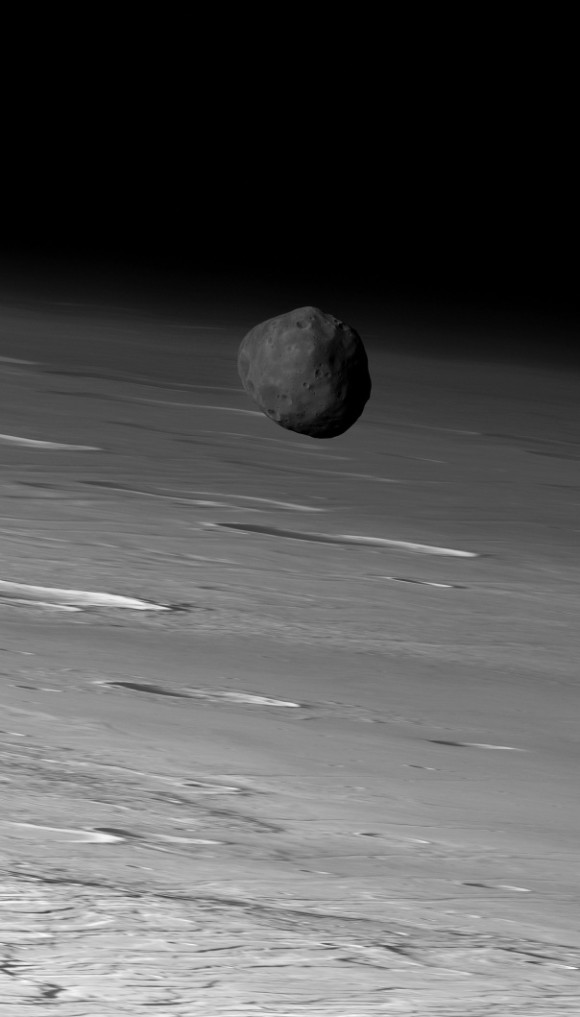On August 17, 2013, NASA’s Mars rover Curiosity captured the cool series of images below, showing the larger of the two Martian moons, Phobos, passing in front of the sun. Curiosity set down on Mars a year ago this month. Unlike on Earth – from whose surface the sun and moon appear nearly identical in size – the size of Phobos in Mars’ sky is too small to cover the sun completely. Thus, when Phobos passed in front of the sun, it created what astronomers would call an annular or “ring” eclipse. That is, the sun’s surface appeared in a ring around the little moon Phobos, which appeared in silhouette.

Curiosity’s images of the annular eclipse are taken three seconds apart.
The rover’s observations of Phobos are said to help Mars researchers to make measurements of the Phobos’ orbit even more precise. NASA commented:
Because this eclipse occurred near mid-day at Curiosity’s location on Mars, Phobos was nearly overhead, closer to the rover than it would have been earlier in the morning or later in the afternoon. This timing made Phobos’ silhouette larger against the sun — as close to a total eclipse of the sun as is possible from Mars.

Bottom line: As seen from the position of the Curiosity rover on Mars, the Martian moon Phobos – larger of Mars’ two moons – passed in front of the sun on August 17, 2013. The little moon is too small to cover the sun completely as seen from Mars. At mid-eclipse, the sun appeared in a fat ring around Phobos: thus it was an annular or “ring” eclipse.











